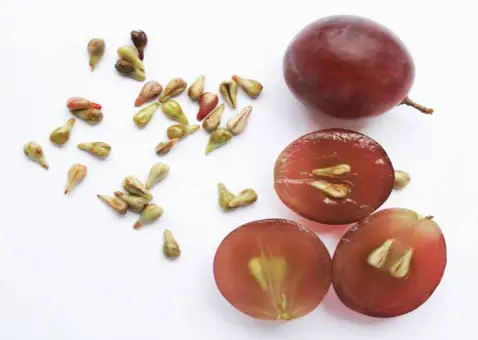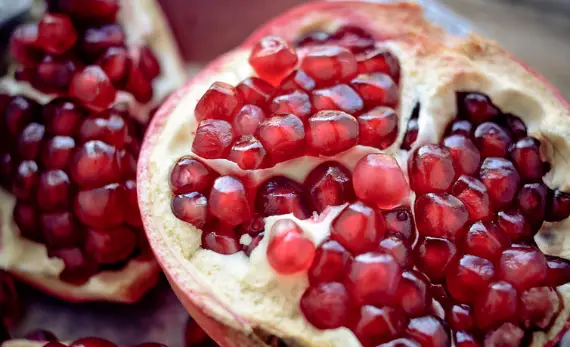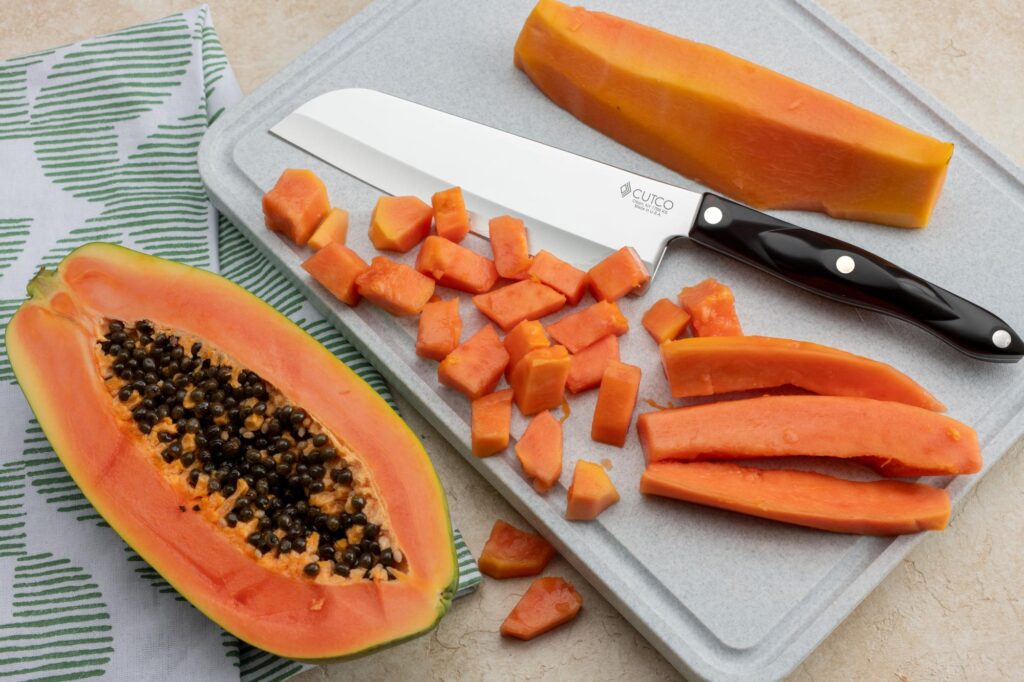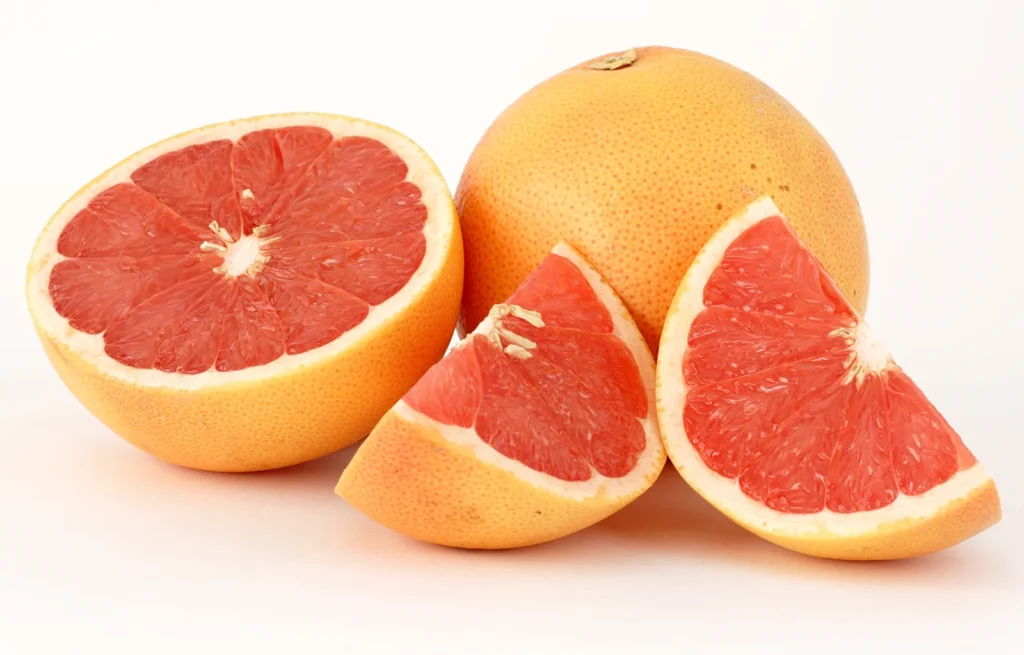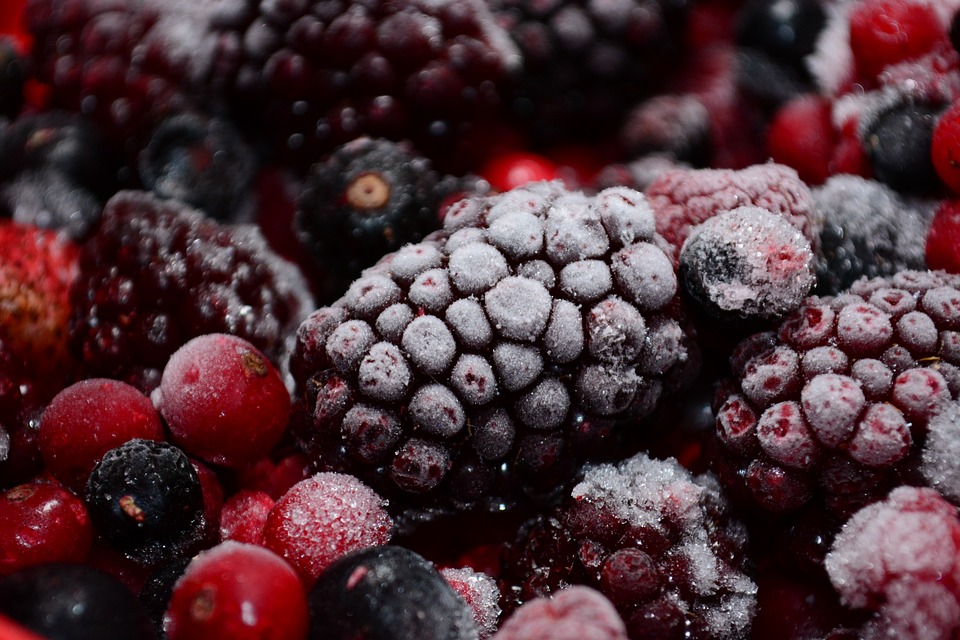The Babaco fruit, also known as the mountain papaya, chamber fruit, or champagne fruit, is a type of tropical fruit from the Vasconcellea genus. This group has 21 species of plants that produce flowering fruits. Babaco fruit is used both at home and in commercial items like canned fruit products.
This fruit has a unique torpedo shape with five deep grooves running lengthwise, making it look like a star from above. When the Babaco fruit is ripe, its thin skin turns a yellow-gold color. Inside, you’ll find a seedless, soft, and juicy flesh that’s similar to a melon and has a bubbly quality. Its taste is a mix of different tropical fruits such as pineapple and kiwi, along with a flavor that comes from its relative, the papaya. Babaco fruits can get pretty large, up to 12 inches long, and you can eat the whole thing.
To grow Babaco trees, you need a warm place with lots of sunlight and nutrients. Water them consistently but be sure not to give them too much, or the roots might rot. Make sure the soil drains well. To help the tree grow better and produce more fruit throughout the year, use balanced fertilizers. Cutting back the branches regularly is also good for the tree’s health and shape.
While Babaco plants need careful attention, once they bear fruit, you’ll have a delicious treat on your hands. You can eat Babaco fruits right away or save them by putting them in sealed containers in the fridge or freezer for later. They’re a tasty and flexible choice for anyone who loves food.
Table of Contents
- What Does Babaco Fruit Taste Like?
- Where Does Babaco Fruit Come From?
- How to Grow Babaco Fruit
- Ways to Grow Babaco Fruit
- When Can You Get Babaco Fruit?
- What’s In a Babaco Fruit?
- Health Benefits of Babaco
- Frequently Asked Questions about Babaco
- What does Babaco fruit taste like?
- What is Babaco called in English?
- Where does Babaco originate from?
- How long does it take for babaco fruit to ripen?
- How can you tell when a babaco is ripe?
- Can you eat unripe green babaco?
- What ways can you eat babaco?
- When’s the best time to eat Babaco?
- Does Babaco need another plant to produce fruit?
What Does Babaco Fruit Taste Like?
Babaco fruits have a special taste that’s a blend of sweet and sour. It reminds you of other tropical fruits like pineapple and kiwi but with the unique taste of papaya as well. The fruit is soft and juicy, with a slight fizziness, making it fun to eat. If you like things a bit sweeter, you can sprinkle some sugar or honey on top.
Where Does Babaco Fruit Come From?
The Babaco fruit originated in the Andean highlands of Ecuador and is a natural mix between two types of pawpaw plants. People in Ecuador have been growing it since before Columbus came to America. The Babaco likes warm and damp weather, making the Andes perfect for growing it.
Now, the Babaco fruit is grown in other places too, like Israel, Italy, Spain, South Africa, California, Australia, and New Zealand. It’s become popular around the world, and each place has found its own way to use this fruit. For example, in some parts of New Zealand with similar weather to Ecuador, people grow Babaco fruits on bushes that look a bit like small palm trees.
The Babaco fruit is not just a tasty food; it’s a part of the rich traditional culture that goes back to ancient Ecuador. Over the years, it has spread worldwide and been welcomed into various cultures, each with their own ways of enjoying this healthy fruit.
How to Grow Babaco Fruit
Growing Babaco fruit is rewarding because it’s both delicious and good for you. It does best in places that are warm and moist, like where it comes from in Ecuador and New Zealand.
The Babaco is usually grown from pieces of the plant itself since it does not produce seeds. Sometimes, people cross it with other similar plants, which can lead to new types of Babaco with different flavors and sizes. It also grows a lot of fruit, which is great if you’re growing it to sell. Whitstable Beach House]
To make sure your Babaco plants grow well, they need plenty of sunlight—at least 8 hours a day—and rich soil that drains well. Keep them watered—but not too much—and add good fertilizers to the soil to help them grow and make lots of fruit.
You can pick the fruit when it’s ripe and still firm, which is usually in the spring, late summer, or fall, depending on the weather where you live. Be careful not to damage the plant when you cut the fruit off with pruning shears.
Another interesting thing about Babaco is that you can use the sticky juice from the green fruits to make special enzymes, which have various uses. So not only is the Babaco yummy, but it’s also really useful for more than just eating fresh, in salads, in drinks, or in cooking recipes.
Ways to Grow Babaco Fruit
Since Babaco fruits can’t make seeds, you have to grow new plants from cuttings. In the spring, you can cut back a tall plant to about 8 inches from the ground. It will quickly grow new sprouts, and you can choose one or two to become new branches that will fruit. Then you can take the old branch and cut it into pieces about a foot long, making sure each piece has a bud. Dip the pieces in a fungicide and a rooting powder before planting them upright in sand or loose soil, where they will start to grow roots.
Another way to clone Babaco is by cutting smaller pieces, letting them dry a bit, then treating them with a fungus-killer and a root-growing chemical before putting them in the soil. It can take about 5 to 7 weeks for the new plants to start growing roots.
Some people also use other similar plants as the base for grafting Babaco plants. This can make the plants grow stronger, fight off pests better, and handle the cold more easily.
When Can You Get Babaco Fruit?
Babaco fruits are usually found in the spring and summer, but in some places, you can get them all year round.
What’s In a Babaco Fruit?
Babaco fruits are full of good stuff like:
- Vitamin C: 23 mg – this helps your body heal and stay healthy.
- Vitamin A: 0.16-2.0 IU – important for your eyes and skin.
- Vitamin B1 (Thiamine): 0.02 – 0.3 mg – it keeps your nerves and muscles working well.
- Riboflavin (Vitamin B2): Contains between 0.02 and 0.06 mg, which is essential for the body’s energy production and breaking down nutrients.
- Niacin (Vitamin B3): Has a range of 0.5 to 1.1 mg, crucial for maintaining healthy skin and nerves, as well as digestive system support.
- Phosphorus: This important mineral is present from 7.7 to 17.1 mg, helping build strong bones and teeth, and aiding in energy metabolism.
- Calcium: With 8 to 12.1 mg, it contributes to bone health, muscle function, and nerve signaling.
- Sodium: Contains a little amount, 1.3 to 3.0 mg, which is an essential electrolyte for normal body function.
- Potassium: A vital mineral, ranging from 132 to 220 mg, helps with heart function and fluid balance.
- Iron: Provides 0.3 to 4.2 mg, which is crucial for making hemoglobin and preventing anemia.
- Magnesium: Ranges from 6.0 to 15.4 mg and is key for muscle and nerve function, as well as a healthy immune system.
- Carbohydrate: Offers energy, with values between 4.6 and 6.0 g, important for brain and body fuel.
- Fats (Lipids): Very low in fats, between 0.02 and 0.3 g, good for a heart-healthy diet.
- Protein: Contains a small quantity, 0.7 to 1.3 g, which is beneficial for body repair and growth.
- Water: High water content of 93 to 94 g, excellent for hydration.
The babaco fruit is full of important vitamins and minerals including vitamin C, A, thiamine, riboflavins, and niacin which are important for us to stay healthy and for a strong immune system.
Besides those, it also includes plenty of phosphorus, calcium, sodium, potassium, iron, magnesium, carbs, a little fat, and protein. It’s also really high in water. All these nutrients make babaco a healthy choice for any meal because of its nutritional value and yummy taste.
Health Benefits of Babaco
Eating babaco fruit offers many health advantages such as:
- Strengthening the immune system: Full of vitamin C, babaco boosts your immunity and helps your body fight germs. Vitamin A is great for eyesight and skin health too.
- Better digestion: Thanks to its fiber, babaco improves gut health and keeps you regular, and helps avoid constipation.
- Cholesterol management: It contains pectin which lowers cholesterol by binding to bile acids in your gut.
- Reducing inflammation: Babaco’s antioxidants fight inflammation and protect your cells from damage.
- Heart health: Its potassium helps manage blood pressure and your heart health.
- Control blood sugar: As a low-glycemic food, babaco helps maintain steady blood sugar levels.
- Weight loss ally: Packed with fiber, it helps you feel full and can aid in weight loss as part of a balanced diet and exercise.
Overall, babaco fruit is a superb choice when it comes to getting your daily dose of vitamins and minerals. It’s also low in calories, making it a smart addition to your diet if you’re trying to stay fit or healthy.
Frequently Asked Questions about Babaco
Let’s address some common questions about babaco fruit:
